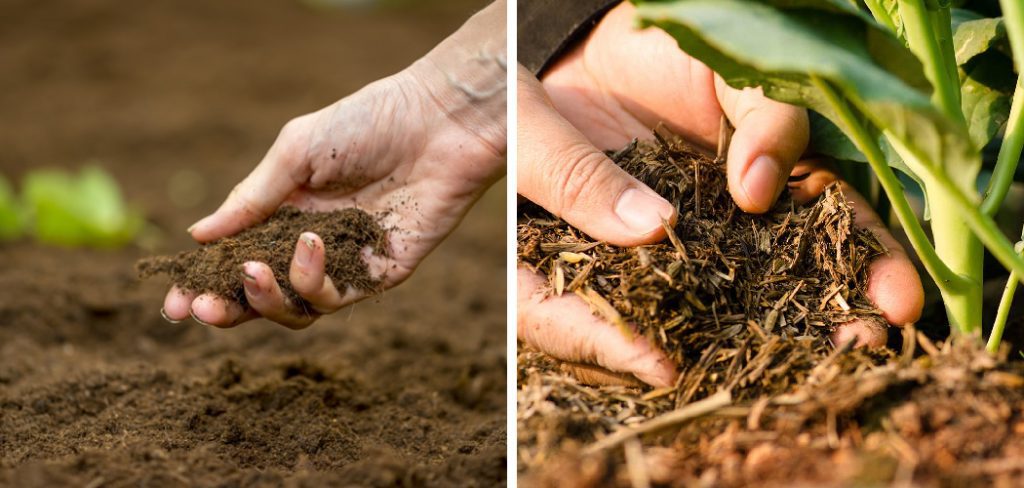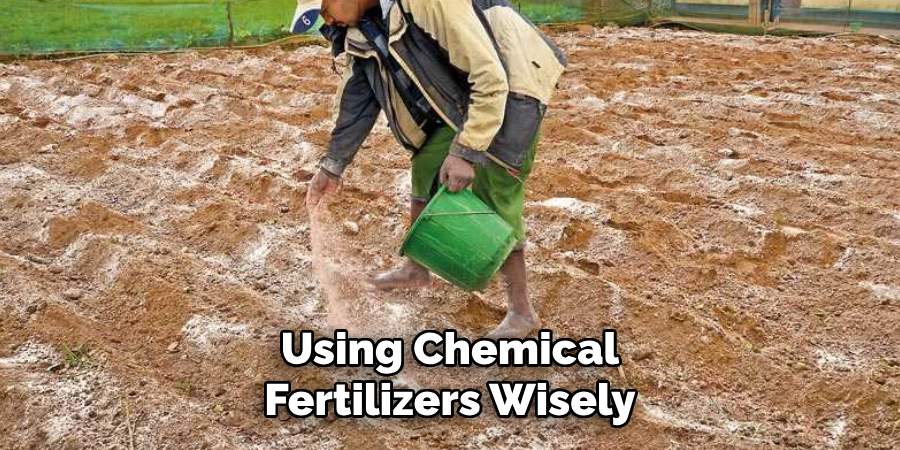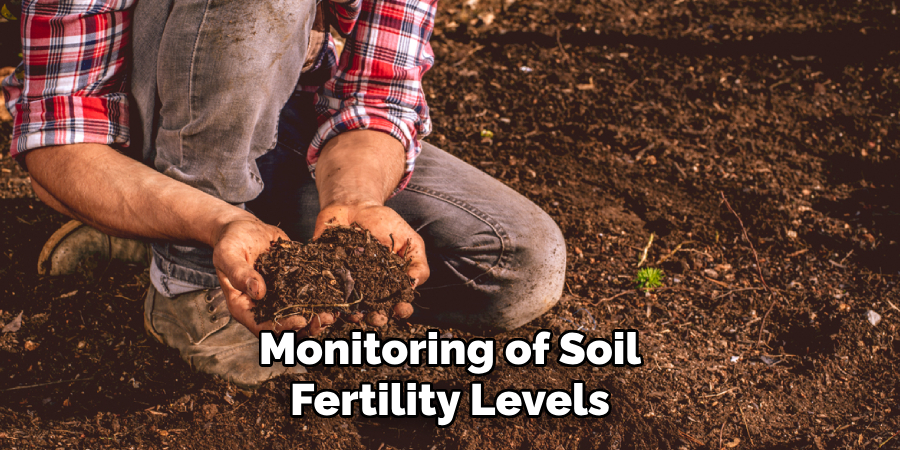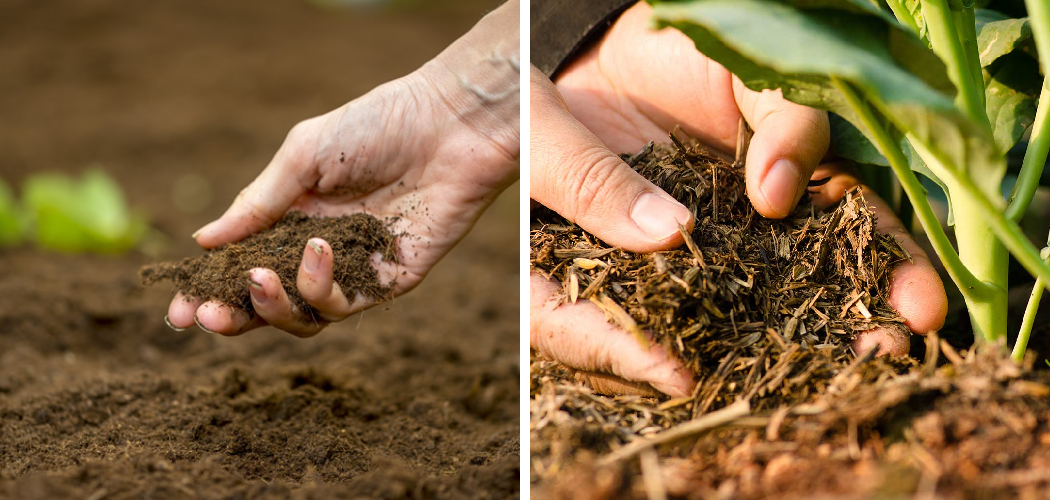To improve soil fertility, focus on organic matter and nutrient management. A well-rounded approach includes practices like composting, crop rotation, cover cropping, and proper fertilizer application to ensure a healthy and fertile soil.
These techniques help in enriching the soil with essential nutrients, improving soil structure and water retention, fostering beneficial soil organisms, and reducing soil erosion. Additionally, applying organic matter such as compost or manure enhances soil fertility by providing a balanced nutrient supply and promoting microbial activity.
By adopting these practices, farmers and gardeners can effectively enhance soil fertility and create a sustainable and productive environment for plants to thrive.

The Importance Of Soil Fertility
Soil fertility plays a vital role in the growth of plants and overall soil health. The presence of essential nutrients in the soil is crucial. These nutrients have a direct impact on the yield of crops. They provide the necessary nourishment for plants to thrive.
Moreover, soil fertility contributes to the overall health and balance of the soil ecosystem. It promotes the growth of beneficial microorganisms and supports the root development of plants. Therefore, it is imperative to focus on improving soil fertility to ensure optimum plant growth and crop production.
By maintaining the right balance of nutrients in the soil, farmers can create an environment that is conducive to healthy plant growth. This, in turn, leads to higher crop yields and better agricultural productivity.
Factors Affecting Soil Fertility
Soil composition and structure play a crucial role in determining soil fertility. The composition refers to the different types and amounts of minerals, rocks, and organic matter present in the soil. The structure, on the other hand, refers to the arrangement and aggregation of soil particles.
The ph level and acidity of the soil also greatly affect its fertility. Different plants thrive at different ph levels, so it is vital to ensure that the soil ph is within the range suitable for the desired crops. Nutrient availability is another significant factor that impacts soil fertility.
A healthy soil rich in organic matter provides a steady supply of essential nutrients to plants. Soil erosion and nutrient leaching can negatively impact soil fertility by washing away valuable nutrients. Implementing erosion control measures and managing water runoff can help mitigate these issues and improve soil fertility.
How to Improve Soil Fertility: Step by Step Guide
Assessing Soil Fertility
Soil fertility is crucial for healthy plant growth and high agricultural productivity. Assessing soil fertility involves using various testing methods and tools to analyze the composition and nutrient levels in the soil. With these tests, farmers and gardeners can interpret the results to identify any nutrient deficiencies or imbalances.
By understanding the specific needs of the soil, appropriate measures can be taken to improve its fertility. This may include adding organic matter, such as compost or manure, to enhance nutrient content. Additionally, adjusting ph levels and providing adequate irrigation can also contribute to optimal soil fertility.
With the help of soil testing and careful analysis, farmers and gardeners can effectively improve soil fertility to support the healthy growth of plants and crops.
Enhancing Soil Fertility Naturally
Improving soil fertility naturally involves utilizing organic matter to enhance soil structure. One effective method is through composting and the use of soil amendments. Composting allows for the decomposition of organic materials, which then enriches the soil with essential nutrients.
These nutrients improve soil fertility and promote the growth of healthy plants. Additionally, incorporating crop rotation and cover cropping techniques plays a significant role in enhancing soil fertility. Crop rotation involves alternating the types of crops grown in a specific area, preventing the depletion of nutrients and reducing the risk of plant diseases.
Cover cropping, on the other hand, involves planting specific crops during fallow periods to protect the soil from erosion and add organic matter. By implementing these natural techniques, farmers and gardeners can improve the overall fertility and health of their soil.
Utilizing Chemical Fertilizers
Chemical fertilizers are a valuable tool for improving soil fertility. Understanding nutrient ratios and formulations is crucial in their effective utilization. Applying the right amount and timing of these fertilizers is essential for optimal results. It is important to consider the pros and cons of using chemical fertilizers.
While they can provide quick and targeted nutrient supplementation, there are also potential drawbacks such as environmental pollution and nutrient imbalances. To maximize the benefits of chemical fertilizers, it is advisable to carefully follow recommended application rates and timings. Regular soil testing can help determine the specific nutrient requirements and reduce the risk of over or under application.

By using chemical fertilizers wisely, farmers and gardeners can enhance soil fertility and ensure healthy plant growth.
Soil Fertility Management Practices
Soil fertility management practices play a crucial role in improving soil fertility. Efficient nutrient application strategies are essential for providing plants with the right amount of nutrients. Proper irrigation and water management ensure that plants receive adequate water without wastage.
This is important for optimal growth and development. Soil conservation and erosion control measures contribute to maintaining the health and productivity of the soil. By preventing soil erosion, the nutrient-rich topsoil remains in place, benefitting plants’ nutrient uptake. Implementing these practices can enhance soil fertility, resulting in healthier crops, increased yields, and improved overall agricultural productivity.
Implementing Sustainable Agriculture Techniques
Implementing sustainable agriculture techniques is crucial for improving soil fertility. One effective method is utilizing beneficial microorganisms and biofertilizers. These natural substances help enrich the soil with essential nutrients, promoting healthy plant growth. Additionally, precision agriculture and site-specific soil management play a vital role.
By analyzing the unique characteristics of each field, farmers can tailor their farming practices to optimize soil health. Furthermore, sustainable pest and weed control methods reduce the dependence on harmful chemicals. Integrated pest management and organic weed control techniques ensure the protection of soil biodiversity.
By adopting these sustainable approaches, farmers can enhance soil fertility, reduce environmental impact, and promote long-term agricultural productivity.
Soil Fertility Maintenance And Long-Term Strategies
Soil fertility maintenance involves continuous monitoring of soil fertility levels and conducting annual soil testing for nutrient management. These measures help in long-term strategies to improve soil fertility. Crop rotation, an effective practice, helps to prevent nutrient depletion and build a healthier soil ecosystem.

Additionally, integrated nutrient management techniques, which involve the use of organic and inorganic fertilizers, can further enhance soil fertility. By carefully managing nutrient inputs and implementing sustainable farming practices, farmers can optimize nutrient availability in the soil, leading to improved crop productivity.
Monitoring soil fertility levels and implementing appropriate strategies is crucial for achieving sustainable agriculture and ensuring food security for future generations.
Frequently Asked Questions Of How To Improve Soil Fertility
How Can I Improve Soil Fertility Naturally?
To improve soil fertility naturally, you can try adding organic matter like compost or manure, practicing crop rotation, using cover crops, and avoiding over-tilling. These methods help improve soil structure, retain nutrients, and enhance microbial activity, leading to healthier and more productive soil.
What Are The Benefits Of Improving Soil Fertility?
Improving soil fertility has several benefits, including better nutrient availability for plants, increased crop yields, improved water retention in the soil, reduced erosion, enhanced soil structure, and increased microbial activity. By improving soil fertility, you can create a sustainable and productive environment for your plants to thrive.
How Can I Test The Fertility Of My Soil?
To test the fertility of your soil, you can use various methods. A common approach is to send a soil sample to a testing laboratory, which will provide detailed information about nutrient levels, ph levels, and other important factors. You can also use soil test kits available in garden centers or consult with a local agriculture extension office for guidance.
Conclusion
There are several simple and practical ways to improve soil fertility in your garden. By implementing organic gardening practices, such as composting and adding organic matter, you can enrich your soil’s nutrient content. Additionally, rotating crops, practicing crop diversification, and incorporating cover crops can help break pest and disease cycles, improve soil structure, and increase beneficial microbial activity.
Furthermore, avoiding the use of synthetic fertilizers and pesticides will promote a healthier soil ecosystem. Remember to test your soil regularly to identify any nutrient deficiencies or imbalances, and adjust your fertilization and amendment strategies accordingly. With patience, consistency, and a commitment to sustainable and regenerative practices, you can significantly enhance the fertility of your soil, leading to more abundant and thriving plants in your garden.
Happy gardening!

